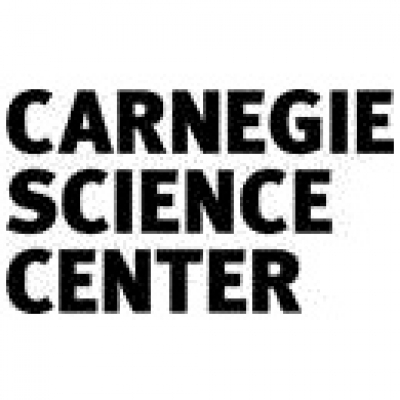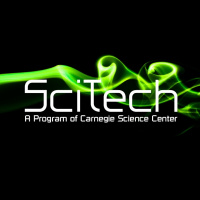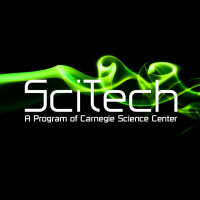Carnegie Science Center Podcast
- Author: Vários
- Narrator: Vários
- Publisher: Podcast
- Duration: 59:51:20
- More information
Informações:
Synopsis
Listen to many of the unique and interesting talks given at Carnegie Science Center.
Episodes
-
Cafe Scientifique: "The Pulitzer Air Races: American Aviation and Speed Supremacy"
04/02/2014 Duration: 01h04minAmidst great fanfare, three American racing airplanes were shipped to France to fly in the prestigious Gordon Bennett Race in the fall of 1920. None completed a single lap of the race. American aviation plunged to a nadir. The Pulitzer Trophy Air Races, endowed by his sons in memory of publisher Joseph Pulitzer, lifted American aviation to the top. In 1923, after the first three of six Pulitzers and an American racer setting world speed records, a French magazine lamented American "pilots have broken the records which we, here in France, considered as our own for so long." Winning speeds increased 60 percent to 249 mph, and Pulitzer racers set closed course and straightaway speed records in 1922, 23, and 25. The winning racers in the 1922 and 25 Pulitzers, mounted on floats, won the most prestigious international air race – the Schneider Trophy Race for seaplanes in 1923 and 25. More than a million people saw the Pulitzers; millions more read about them and watched them in newsreels. Commercially, the Pulitz
-
Cafe Scientifique Q&A: "The Pulitzer Air Races: American Aviation and Speed Supremacy"
04/02/2014 Duration: 18minThis is the Q&A portion of the talk with Michael Gough. Amidst great fanfare, three American racing airplanes were shipped to France to fly in the prestigious Gordon Bennett Race in the fall of 1920. None completed a single lap of the race. American aviation plunged to a nadir. The Pulitzer Trophy Air Races, endowed by his sons in memory of publisher Joseph Pulitzer, lifted American aviation to the top. In 1923, after the first three of six Pulitzers and an American racer setting world speed records, a French magazine lamented American "pilots have broken the records which we, here in France, considered as our own for so long." Winning speeds increased 60 percent to 249 mph, and Pulitzer racers set closed course and straightaway speed records in 1922, 23, and 25. The winning racers in the 1922 and 25 Pulitzers, mounted on floats, won the most prestigious international air race – the Schneider Trophy Race for seaplanes in 1923 and 25. More than a million people saw the Pulitzers; millions more read about
-
SciTech Days: "A Personal Robot for a Better Quality of Life"
06/12/2013 Duration: 49minAnca Dragan Carnegie Mellon Robotics Institute A unique aspect of the Quality of Life Technology Center (QoLT) Center is its strength in all the relevant disciplines, which include robotics, rehabilitation science, human computer interaction, geriatrics, social sciences, and health care policy. Through their people, QoLT is connected to some of the world’s leading health systems, and technological and clinical research facilities. People design robots to make our lives better, often in unique ways. Your presenter Anca Dragan (who is part of QoLT) is a doctorate student at Carnegie Mellon's Robotics Institute and a member of the Personal Robotics Lab. Her research lies at the intersection of robotics, machine learning, and human-computer interaction. SciTech Days are a special kind of field trip for middle and high school students that features the growth areas of Pittsburgh: biotech & health, nanotechnology & advanced materials/processes, information technology & robotics, and eco-tech (think envi
-
Cafe Scientifique: "Eco-Inovation: Are We There Yet?"
04/12/2013 Duration: 53minEric J. Beckman Chemical Engineering Department University of Pittsburgh Many consumers would agree that using truly environmentally friendly products is a good thing. However, having to wade through a sea of less-than-accurate "green" advertising claims as well as the perception that greener products don't work as well or are more expensive than their conventional cousins has left customers feeling blue. The widespread use of misleading green claims has produced rampant skepticism regarding industry’s ability to design truly greener products leading some economists to conclude that without government support, greener products can't survive. Eric Beckman hopes to change that. Beckman believes it is possible to achieve real eco-innovation, where performance is enhanced even as the environmental footprint of a product is reduced. Beckman will discuss some of what he describes as the fundamental guiding principles of eco-innovation including developing and marketing products in a way that leaves customers sayin
-
Cafe Scientifique Q&A: "Eco-Inovation: Are We There Yet?"
04/12/2013 Duration: 01h44sThis is the Q&A portion of the evening. *A correction from the Q&A: Zipcar's IPO was in April 2011. Zipcar common stock traded on NASDAQ under the ticker symbol "ZIP" until 14 March 2013, when Avis Budget Group acquired Zipcar for US$500 million in cash. Eric J. Beckman Chemical Engineering Department University of Pittsburgh Many consumers would agree that using truly environmentally friendly products is a good thing. However, having to wade through a sea of less-than-accurate "green" advertising claims as well as the perception that greener products don't work as well or are more expensive than their conventional cousins has left customers feeling blue. The widespread use of misleading green claims has produced rampant skepticism regarding industry’s ability to design truly greener products leading some economists to conclude that without government support, greener products can't survive. Eric Beckman hopes to change that. Beckman believes it is possible to achieve real eco-innovation, where perfo
-
SciTech Days: "Digital Dreaming"
22/11/2013 Duration: 15minExplore digital dreaming with Matt Stewart, who earned his master's degree from Carnegie Mellon University's Entertainment Technology Center (ETC). Learn about a graduate program that combines technology and fine arts to creates new processes, tools, and vision for storytelling and entertainment. During this workshop, Stewart will share his experiences at ETC, which allowed him to work on a variety of projects in the field of themed entertainment. His projects included interactive installation at the Give Kids the World Resort, an exploration of 3D printing while studying in Barcelona, and tinkering with embedded electronics. He is also the co-business owner of Digital Dream Labs, LLC, which has created an interactive tabletop experience, called DREAM-TABLETOP, that combines puzzle blocks with a virtual environment. The program aims to teach children abstract computer science principles, such as objects, properties (size, action), arrays (colors), and variables in a fun and tangible way. Prior to moving to Pi
-
Cafe Scientifique Q&A: "Health Care Revolutionized by the Digital Age"
14/11/2013 Duration: 54minThis is the Q&A portion of the talk by Dr. Andrew Watson. Healthcare traces its roots back to around 400 BC and the era of Hippocrates, when doctors began realizing how face-to-face treatments could aid in healing. Through the evolution of healthcare we have gone from learning about basic circulation to the role of genetics. The march of time has seen the advent of ever more complicated surgeries, organ transplants and now even video-based procedures. But, with all of the modernization of healthcare and scientific research, we never predicted the digital age and its impact on the face-to-face visit and healthcare. In less than a decade, we've seen patients became empowered with wireless broadband, smart phones, early sensor data and most importantly a global interconnectedness. Traditional geographical boundaries are melting away and the access to information, individuals, and intelligence is at our fingertips. Join Dr. Andrew Rose Watson as he discusses how we are on the cusp of perhaps the greatest par
-
Cafe Scientifique: "Health Care Revolutionized by the Digital Age"
14/11/2013 Duration: 52minHealthcare traces its roots back to around 400 BC and the era of Hippocrates, when doctors began realizing how face-to-face treatments could aid in healing. Through the evolution of healthcare we have gone from learning about basic circulation to the role of genetics. The march of time has seen the advent of ever more complicated surgeries, organ transplants and now even video-based procedures. But, with all of the modernization of healthcare and scientific research, we never predicted the digital age and its impact on the face-to-face visit and healthcare. In less than a decade, we've seen patients became empowered with wireless broadband, smart phones, early sensor data and most importantly a global interconnectedness. Traditional geographical boundaries are melting away and the access to information, individuals, and intelligence is at our fingertips. Join Dr. Andrew Rose Watson as he discusses how we are on the cusp of perhaps the greatest paradigm shift in history in how we view healthcare and treat pat
-
Cafe Scientifique: "Robot Futures"
11/09/2013 Duration: 51minIllah Reza Nourbakhsh The ambition of modern robotics goes beyond copying humans, beyond the effort to make walking, talking androids that are indistinguishable from people. Future robots will have superhuman abilities in both the physical and digital realms. They will be embedded in our physical spaces, with the ability to go where we cannot, and will have minds of their own, thanks to artificial intelligence. They will be fully connected to the digital world, far better at carrying out online tasks than we are. In his new book Robot Futures, the Illah Reza Nourbakhsh considers how we will share our world with these creatures, and how our society could change as it incorporates a race of stronger, smarter beings. Nourbakhsh imagines a future that includes adbots offering interactive custom messaging; robotic flying toys that operate by means of "gaze tracking"; robot-enabled multimodal, multicontinental telepresence; and even a way that nanorobots could allow us to assume different physical forms. In Robot
-
Cafe Scientifique Q&A: "Robot Futures"
11/09/2013 Duration: 47minIllah Reza Nourbakhsh This is the Q&A portion of Dr. Nourbakhsh's presentation on 'Robot Futures'. The ambition of modern robotics goes beyond copying humans, beyond the effort to make walking, talking androids that are indistinguishable from people. Future robots will have superhuman abilities in both the physical and digital realms. They will be embedded in our physical spaces, with the ability to go where we cannot, and will have minds of their own, thanks to artificial intelligence. They will be fully connected to the digital world, far better at carrying out online tasks than we are. In his new book Robot Futures, the Illah Reza Nourbakhsh considers how we will share our world with these creatures, and how our society could change as it incorporates a race of stronger, smarter beings. Nourbakhsh imagines a future that includes adbots offering interactive custom messaging; robotic flying toys that operate by means of "gaze tracking"; robot-enabled multimodal, multicontinental telepresence; and even a
-
Cafe Scientifique: "Bikes and Bodies"
10/07/2013 Duration: 38minGeorgena Terry Founder, Terry Precision Bicycles for Women CEO, Heart of Steel Bicycles Have you ever ridden on a bike that just felt right – or that just felt wrong? At its heart, a bicycle frame is an exercise in trigonometry. As with dominoes, changing one element often has effects on the other elements. The body of the rider also has to fit into the equation. There's no better way to understand these relationships than by designing a bicycle frame. Georgena Terry will help you understand this very simple, yet very sophisticated machine, based on her background in mechanical engineering and her experience in designing bicycles. The next time you look at your bike, you'll see it through different eyes. Learn why women's bodies often call for different bike design than men's, and why some bikes might wear you out more than others. And if you're in the market for a new bicycle, you'll be prepared to understand the meaning behind all the numbers. Recorded at Carnegie Science Center on Monday, July 8, 2013.
-
Café Scientifique Q&A: "Bikes and Bodies"
09/07/2013 Duration: 47minThis is the Q&A portion of Georgena Terry's talk, "Bikes and Bodies" Have you ever ridden on a bike that just felt right – or that just felt wrong? At its heart, a bicycle frame is an exercise in trigonometry. As with dominoes, changing one element often has effects on the other elements. The body of the rider also has to fit into the equation. There's no better way to understand these relationships than by designing a bicycle frame. Georgena Terry will help you understand this very simple, yet very sophisticated machine, based on her background in mechanical engineering and her experience in designing bicycles. The next time you look at your bike, you'll see it through different eyes. Learn why women's bodies often call for different bike design than men's, and why some bikes might wear you out more than others. And if you're in the market for a new bicycle, you'll be prepared to understand the meaning behind all the numbers. Recorded at Carnegie Science Center in Pittsburgh, PA on July 8, 2013.
-
Café Scientifique: "The Living Dead Brain"
05/06/2013 Duration: 56min"The Living Dead Brain: What human brains teach us about zombie minds" The realities of modern neuroscience once only existed in the imaginations of science fiction authors. Brain signals can control robotic arms or make music, viruses are being used to reprogram neurons to fire when exposed to light, and giant magnets are capable of visualizing our thoughts in action. Join Dr. Timothy Verstynen (Assistant Professor in Psychology & Neuroscience at Carnegie Mellon University) as he turn the tables and shows how real science can be used to explain science fiction. Using forensic neuroscience, Dr. Verstynen will demonstrate how the behavior of horror movie zombies (e.g., the way they move, their inability to talk or experience pain) can be understood as a surreal convergence of neurological impairments. This educational talk is designed to highlight how popular culture can be leveraged as a useful teaching tool for science education at all ages. Recorded on Monday, June 3, 2013 at Carnegie Science Center
-
Café Scientifique Q&A: "The Living Dead Brain"
04/06/2013 Duration: 55minThis is the Q&A portion of Dr. Timothy Verstynen's talk, "The Living Dead Brain: What human brains teach us about zombie minds" The realities of modern neuroscience once only existed in the imaginations of science fiction authors. Brain signals can control robotic arms or make music, viruses are being used to reprogram neurons to fire when exposed to light, and giant magnets are capable of visualizing our thoughts in action. Join Dr. Timothy Verstynen (Assistant Professor in Psychology & Neuroscience at Carnegie Mellon University) as he turn the tables and shows how real science can be used to explain science fiction. Using forensic neuroscience, Dr. Verstynen will demonstrate how the behavior of horror movie zombies (e.g., the way they move, their inability to talk or experience pain) can be understood as a surreal convergence of neurological impairments. This educational talk is designed to highlight how popular culture can be leveraged as a useful teaching tool for science education at all ages. R
-
Café Scientifique Q&A: "Flying Colors: Innovation and Evolution in Butterfly Coloration"
08/05/2013 Duration: 46minThis is the Question and Answer portion of our evening with Dr. Nathan Morehouse following his lecture "Flying Colors: Innovation and Evolution in Butterfly Coloration." Dr. Morehouse has been chasing colorful insects since the age of 3, but he began his formal training as a biologist at Cornell University, graduating with Distinction in Research in 2000. After graduation, he worked as a commercial salmon fisherman off of the coast of Kodiak Island, a farmhand on Vancouver Island, and the general manager and sommelier of a French restaurant in New York, before returning to biology as a doctoral student at Arizona State University. He received his Ph.D. in 2009 studying sexual selection, coloration and resource dynamics in the Cabbage White butterfly under the direction of Dr. Ron Rutowski. He then joined the lab of Dr. Jerome Casas at the Université de Tours, France as a European Union Marie Curie Fellow, where he studied the evolution and development of seasonal wing coloration in the European Map Butterfly
-
Café Scientifique: "Flying Colors: Innovation and Evolution in Butterfly Coloration"
08/05/2013 Duration: 39min*Note: Due to a microphone malfunction, the first few minutes of the lecture were lost. We apologize for the inconveniance and less than ideal quality of what was able to be recorded. Butterfly colors have fascinated biologists and amateurs alike for thousands of years, but it’s only been in the past several decades that researchers have begun to understand many aspects of the function and evolution of these eye-catching traits. Drawing from his own research, Dr. Morehouse will talk about new developments in our understanding of how butterflies produce their colors, what they use them for and why some butterflies are colorful and others are not. Dr. Morehouse has been chasing colorful insects since the age of 3, but he began his formal training as a biologist at Cornell University, graduating with Distinction in Research in 2000. After graduation, he worked as a commercial salmon fisherman off of the coast of Kodiak Island, a farmhand on Vancouver Island, and the general manager and sommelier of a
-
Café Scientifique: The New 21st Century 'War of the Currents' – AC vs. DC Electricity
09/04/2013 Duration: 01h55minView the corresponding slide show here! Abstract: Improvements to the existing electric power grid infrastructure, whose design dates back nearly a century, have been identified as a key aspect of the current U.S. strategy to improve energy efficiency, grid reliability, and power security. In order to effectively and economically implement the necessary improvements and expansions of the power grid infrastructure to meet the emerging needs of smart grid implementation, renewable energy integration, and energy storage applications, increased development and applications of advanced power electronics based technologies, such as High Voltage and Medium Voltage DC Systems (HVDC and MVDC) and Flexible AC Transmission Systems (FACTS), must take place. An overview of current HVDC, MVDC, and FACTS technologies will be provided, along with a discussion of new developments and emerging needs for future transmission and distribution system applications. In addition, an interesting historical perspective will be pro
-
Cafe Sci Preview- Here is a Human Being: At the Dawn of Personal Genomics
01/06/2011 Duration: 29minMisha Angrist, PhD Assistant Professor of the Practice Duke University Institute for Genome Sciences & Policy Here is a Human Being: At the Dawn of Personal Genomics Misha Angrist knows the field of personal genomics well. In April 2007, he became the fourth subject in Harvard geneticist George Church's Personal Genome Project. In 2009, he was among the first few people to have his entire genome sequenced. Dr. Angrist will share his experience as chronicled in is book, Here is a Human Being: At the Dawn of Personal Genomics, and present the pros, cons, and potential impact of personal genomics on human health and society. Misha Angrist holds a PhD degree in Genetics from Case Western Reserve University, and was formerly a board-eligible genetic counselor. He received his MFA in Writing and Literature from the Bennington Writing Seminars, is a past winner of the Brenda L. Smart Fiction Prize, and was nominated for the Pushcart Prize. Dr. Angrist was born and raised in Pittsburgh, PA. Don't miss this month
-
Cafe Scientifique: "What Are Lichens?"
07/05/2011 Duration: 01h06minWhat Are Lichens and What Do They Say About Air Quality in Our Region? Join Matthew R. Opdyke, PhD, for a discussion of his recent research on the lichen community in southwestern Pennsylvania, which included surveys of Frick, Schenley, Mingo Creek parks, and Forbes State Forest. Opdyke's research explores lichens as air pollution indicators, as well their characteristics in rural and urban environments. Lichen, a combination of algae and fungus, come in a variety of shapes and sizes with colorful names like candleflame, fluffy dust, and rough speckled shield. See photographs of lichens taken in southwestern Pennsylvania, learn how to identify lichens, and hear about conservation efforts in the region. Opdyke provides a closer look at lichens and reveals their importance to our regional ecosystem. Recorded at Carnegie Science Center in Pittsburgh, PA.
-
Drilling Down on Marcellus Shale: Environmental Impacts
28/04/2011 Duration: 01h34minPlease download the corresponding PowerPoint Presentation here: https://docs.google.com/leaf?id=0B72jWNjNLuDcNDg1YmJiZWItNjgwZi00MzFmLTllMDQtNTRkZTVhOTMxOWRj&hl=en The Marcellus Shale represents one of the largest reservoirs of unconventional natural gas in the world. It holds the potential to provide a source of energy and jobs. Its extraction, however, is non-trivial and if done without proper safeguards can result in the degradation of water and air quality, and loss of land use. John Stolz, Professor of Environmental Microbiology at Duquesne University, will lead a discussion, providing an overview of the industry, the processes involved in extraction, and the environmental impacts of drilling into the Marcellus Shale. Hear the answers to questions like: What chemicals are used in the fracking process? What are the environmental concerns about extracting gas from the Marcellus Shale? Can earthquakes be caused by fracking? These questions and more are covered, including a Q&A session at the end.

































